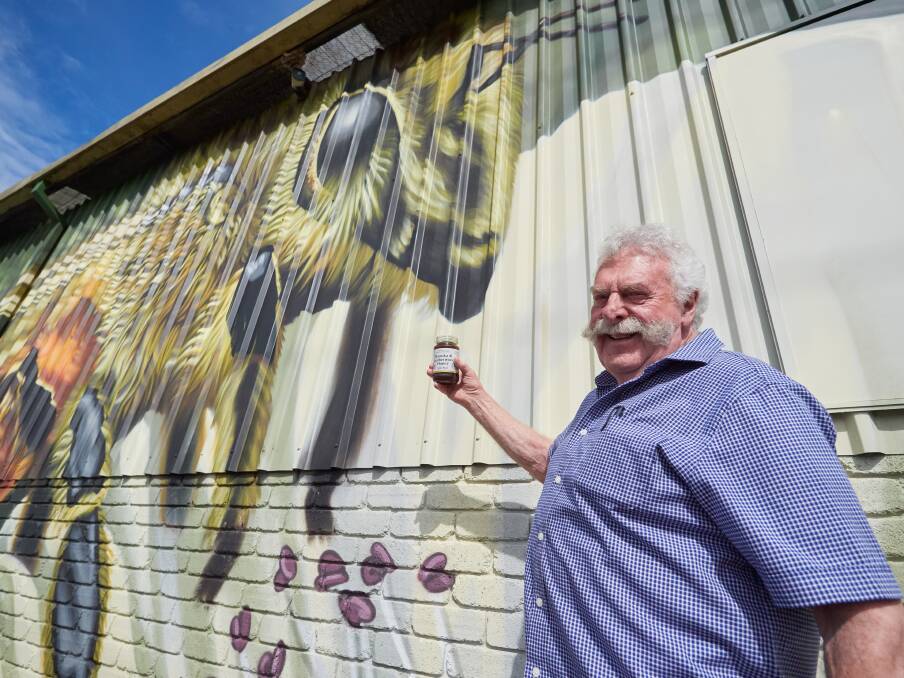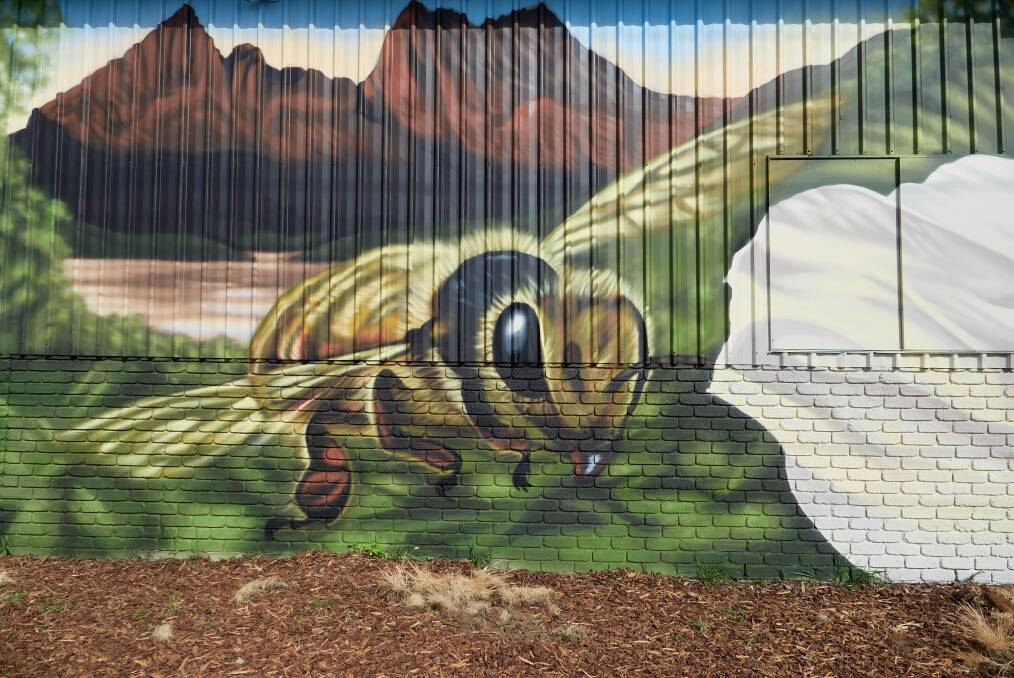
Tasmania's entries on the list of Australia's biggest things has grown, with a giant bee sure to generate some buzz around Invermay.
Subscribe now for unlimited access.
$0/
(min cost $0)
or signup to continue reading
A mural featuring honeybees, flowers and Cradle Mountain was painted by Hobart-based artist Jamin and adorns Lindsay Bourke's Churchill Park Drive warehouse.
Mr Bourke said the artwork livened up what had previously been a drab industrial shed and was a nod to the nation's obsession with larger-than-life artworks.
"We have big things all around Australia," he said.
"You can't hang it up there because the wind would blow it over, but you can certainly put it on your wall."
Mr Bourke said the mural also paid homage to his main base of operations at Sheffield, heralded as the "town of murals".
The mural is the latest of several big things for the prominent honey producer, who has been showered with awards, and launched several new products including mead and a manuka and leatherwood honey blend.

Mr Bourke, who also sits as president of the Tasmanian Beekeepers Association, said although things were looking encouraging from a business perspective things the state's honey industry still faced challenges.
Biosecurity concerns, such as the small hive beetle, remain at the front of mind as do bumblebees which Mr Bourke said had "reared their ugly heads again".
Mr Bourke has been outspoken against the use of bumblebees by fruit and vegetable producers to pollinate their crops as they can out-compete honeybees and were, in his words, "hopeless because they're inbred".
He said there was also the matter of training and retaining staff, as beekeepers needed to spend multiple years learning the intricacies of Tasmanian beekeeping.
Mr Bourke said he took the sustainability of the industry seriously, and had been partnered with TasTAFE for several years to ensure the next generation of beekeepers received the right schooling.
"Otherwise we'd have to rely on people from overseas, and their systems are different to ours," he said.
"Tasmania is completely different to anywhere else as well, because we have such a short build up from the winter to honey production.
"On the mainland, they can produce honey for about eight to 10 months of the year and we only have three months."

This, he said, was due to Tasmania's unique weather patterns - something that could also put pressure on the state's honey industry.
Hotter, drier weather - the hallmarks of El Nino - could drive down honey production, and Mr Bourke said if predictions of a bad bushfire season rang true it could jeopardise hives across the state.
"I always said that if climate change comes it won't affect us in Tasmania, but I'm wrong," Mr Bourke said.
"The last few years we've had lower seasons in the West Coast because it's been dry, uncharacteristically dry.
"If it gets too dry, the plants don't all blossom and they don't all secrete nectar. They're only shallow rooted plants, the leatherwoods. Manuka gets by okay."
The loss of leatherwood honey production in particular would be a major blow, as the tree was endemic to Tasmania and its honey was internationally renowned.


